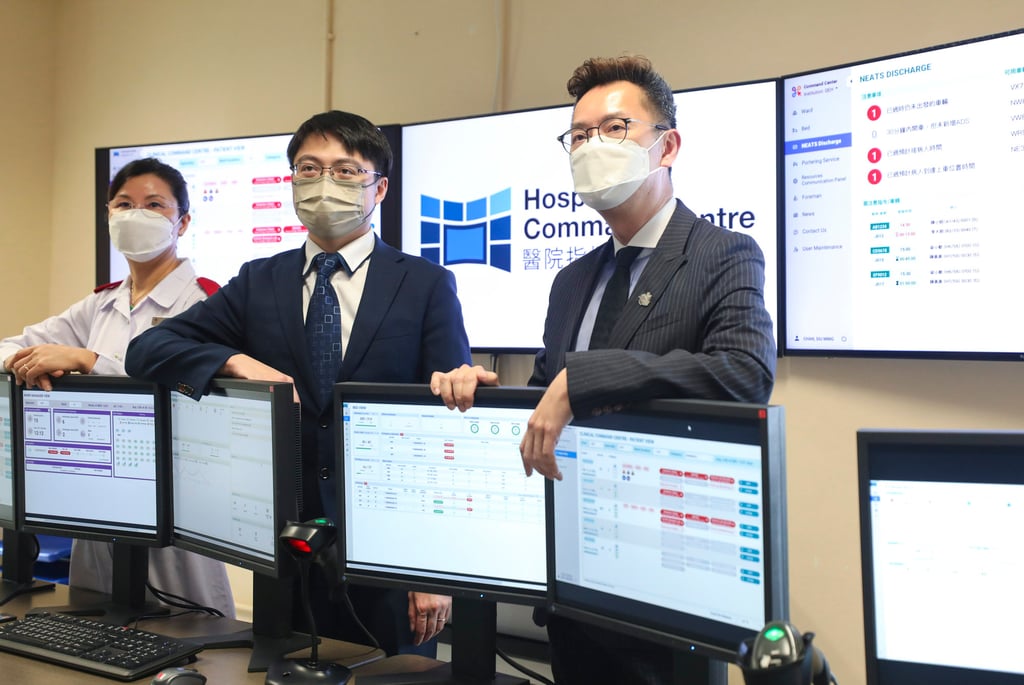Coronavirus: Hong Kong hospital’s data dashboard cuts patient discharge time by a third
- Command centre makes allocating resources and monitoring patients easier and more efficient, says doctor
- Queen Elizabeth Hospital takes a step closer to becoming a ‘smart hospital’ with introduction of new system

A new command centre armed with a “real-time” data dashboard could cut patients’ discharge time at a leading Hong Kong hospital by a third and prove instrumental in the city’s effort to avert overloading the healthcare system during a resurgent fifth coronavirus wave, medical chiefs have said.
The system at the Queen Elizabeth Hospital, which is part of a reform initiative to modernise and digitalise, could also predict “potential risks of deterioration” for inpatients using artificial intelligence.
“We faced a sudden and unprecedented challenge during the fifth Covid-19 wave with a sharp surge in patients. The system allows us to have a real-time grasp of data,” said Dr Calvin Mak, coordinator for information technology and system in the Hospital Authority’s Kowloon Central cluster.

“The most important thing in this pandemic fight is to have clear and accurate data for the purpose of resource allocation. With just one look at the dashboard, you can see everything from usage to availability,” Mak, who is also a neurosurgeon at Queen Elizabeth, added.
Queen Elizabeth, on March 9, became the first major hospital in the city to be converted into a designated Covid-19 institution, which required an urgent transfer of its non-coronavirus patient load to other hospitals within days to free up its beds for infected patients in severe condition.
Since May 20, with the easing of the coronavirus wave, Queen Elizabeth once again resumed normal operations. But management of admissions became a major talking point after city leader John Lee Ka-chiu warned earlier this week that Covid-19 could take up one-fourth of local public health resources by the end of this month, amid a rebound of the epidemic.
A command centre with real-time knowledge of bed occupancy rates in normal and isolation wards, the average length of stay of inpatients, and the daily number of new admissions and discharges could make all the difference in speeding up patient turnover and achieving resource optimisation, Mak said.